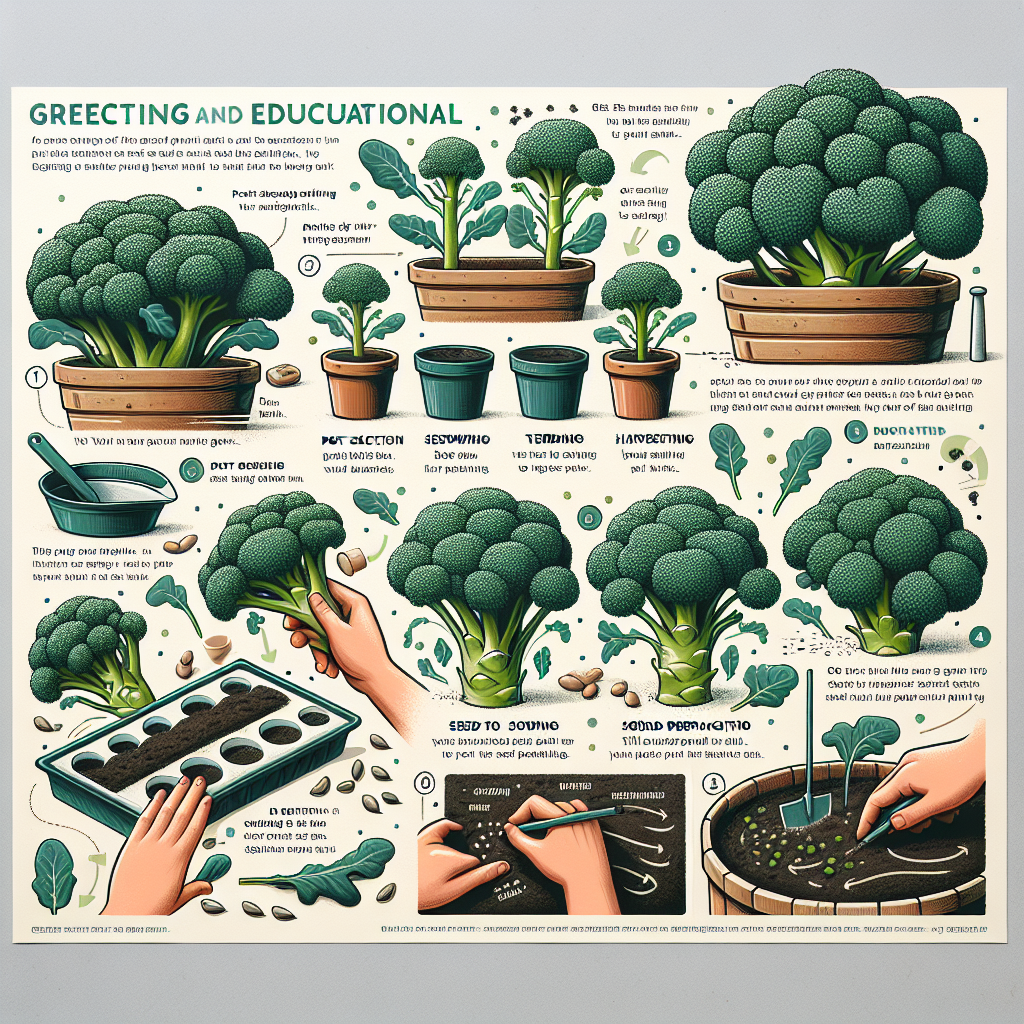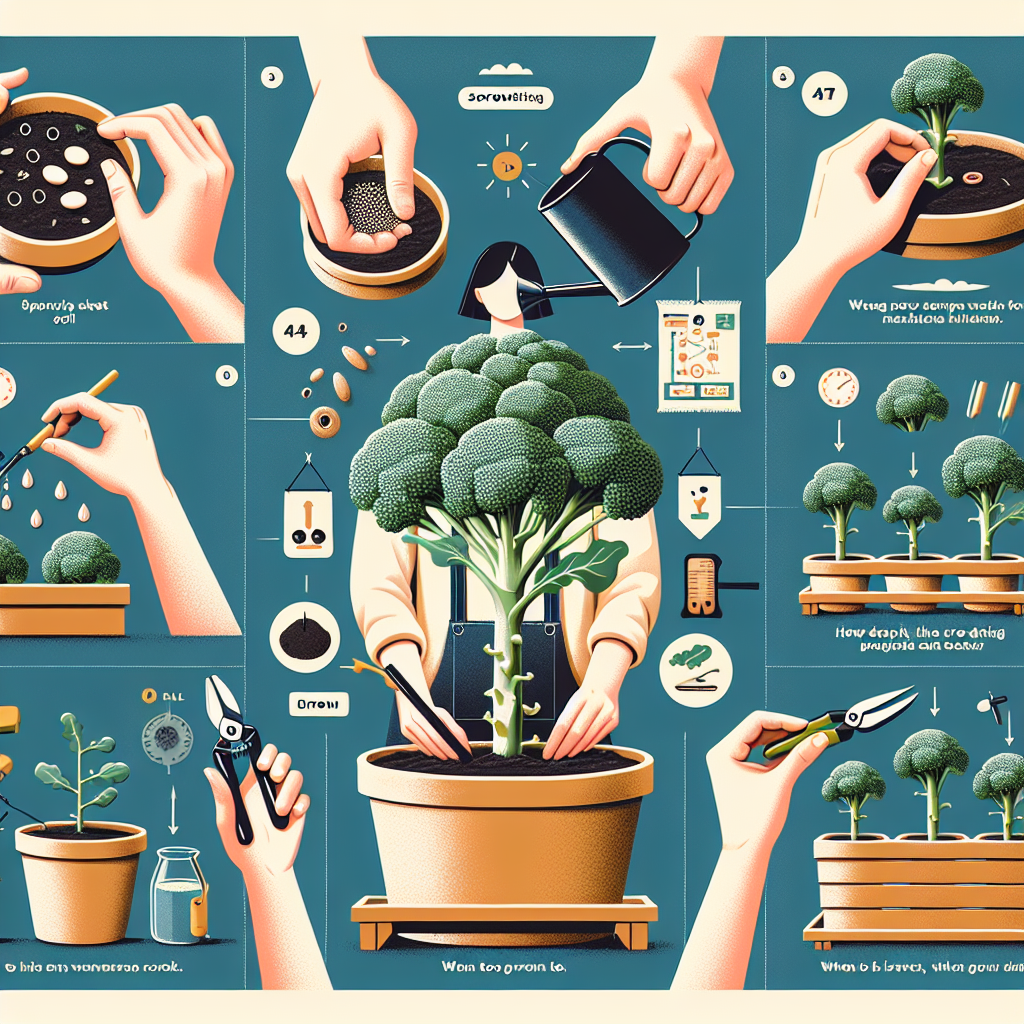Growing Broccoli at Home: A Beginner’s Guide
Broccoli is a nutritious and versatile vegetable that can be grown right in your own backyard. Not only does it provide you with a fresh and healthy addition to your meals, but it also offers the satisfaction of growing your own food. If you’re a beginner looking to grow broccoli at home, this guide will take you through the step-by-step process to ensure a successful harvest.
1. Choosing the Right Variety
When starting your journey of growing broccoli, it’s essential to select the right variety for your climate and growing conditions. Varieties such as ‘Green Comet,’ ‘Premium Crop,’ or ‘Calabrese’ are recommended for beginners due to their easiness to grow and tolerance to different climates.
2. Preparing the Soil
Broccoli thrives in loose, well-draining soil rich in organic matter. Before planting, remove any weeds and loosen the soil using a garden fork or spade. Then incorporate compost or well-rotted manure into the soil to provide essential nutrients for plant growth.
3. Starting Seeds Indoors
Begin by starting your broccoli seeds indoors about 6-8 weeks before the last frost date in your area. Use seed trays or small pots filled with seed-starting mix, sow the seeds at a depth of ¼ inch, and gently water them. Place the trays/pots near a sunny window or under grow lights where they will receive 6-8 hours of sunlight daily.
4. Transplanting Seedlings
Once the seedlings have developed two sets of leaves, they are ready for transplanting outdoors. It’s important to harden off your seedlings before moving them outside by gradually exposing them to outdoor conditions over a week. Transplant them into the prepared garden bed spacing them at least 18 inches apart with rows around 24-36 inches apart.
5. Caring for Broccoli Plants
Broccoli plants require some care and attention to ensure optimal growth and health. Water them regularly, providing around 1-2 inches of water per week. Be cautious not to over-water as broccoli prefers moist but not waterlogged soil. Applying a layer of mulch around the plants can help retain soil moisture and prevent weeds.

6. Fertilizing
Fertilize your broccoli plants with a balanced organic fertilizer a few weeks after transplanting. This will provide them with essential nutrients needed for healthy growth throughout the season. Follow the instructions on the fertilizer package, as over-fertilization can lead to poor-quality heads.
7. Pest and Disease Control
Broccoli is susceptible to various pests and diseases, so it’s crucial to monitor your plants regularly for any signs of trouble. Common pests include aphids, cabbage worms, and cabbage loopers. To control these pests, you can use organic insecticides or handpick them off manually.
8. Harvesting Broccoli
Harvesting broccoli is an exciting part of the growing process. The heads are ready when they are firm, compact, and have tight green florets before they start separating from each other. Cut the central head about 6-8 inches below it using a sharp knife or pruners, which will encourage side shoots to develop for extended harvests.
9. Storing and Using Broccoli
To maintain freshness, refrigerate harvested broccoli in a plastic bag or an airtight container for up to one week. If you have more than you can use fresh, consider blanching and freezing it for long-term storage.
10. Crop Rotation
To avoid pest build-up in your garden soil, practice crop rotation by planting your broccoli in a different location each year. It’s recommended not to plant broccoli in the same bed for at least three years.
Conclusion
Growing broccoli at home is an enjoyable experience that allows you to enjoy fresh and nutritious produce right from your garden. By following this beginner’s guide, you’ll be well on your way to successfully cultivating this versatile vegetable. Remember to choose the right variety, provide proper care, and enjoy the bountiful harvests of your homegrown broccoli.













